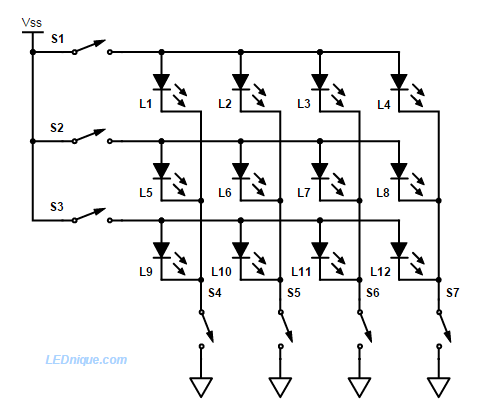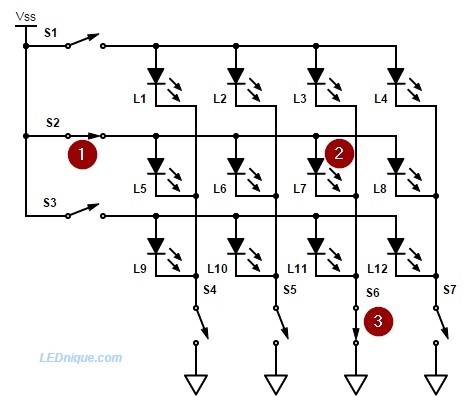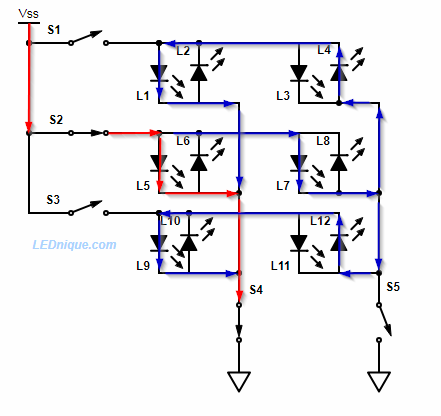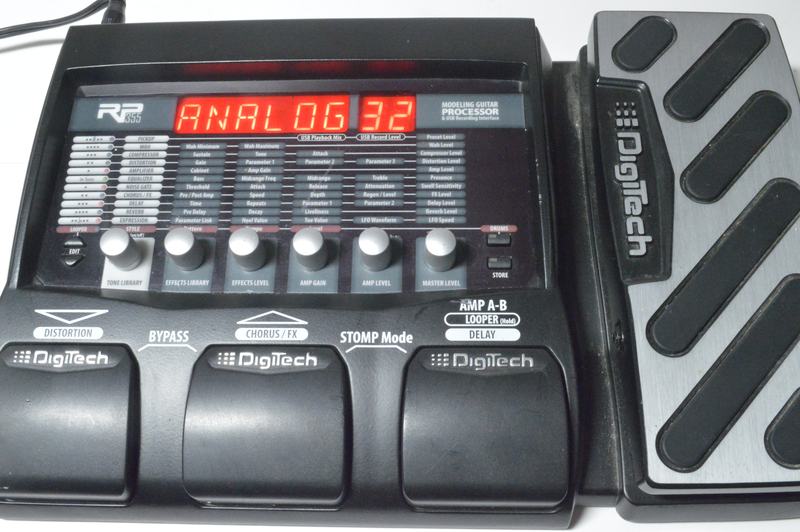Multiplexing is a technique used to connect devices – typically LEDs (for displays) or buttons (for keyboards) – in a matrix of addressable rows and columns. The advantage is simplification of hardware due to the reduced number of pins required. Multiplexed displays using seven-segment LEDs remain popular due to low cost and high brightness.


A practical circuit uses tranistorised switches. Each row is switched on in sequence (S1, then S2 and then S3) and the corresponding switches S4, 5, 6 and 7 closed in synch to switch on the desired LEDs. To fool the eye into seeing a continuous display the sequencing is typically done at more than 50 times per second.
In the example of Figure 1, only seven lines are required to switch twelve LEDs. The pin-count saving increases with larger displays as the pin-count (for a square matrix) is the square root of the number of LEDs. This reduces the pins required on the controller, reducing cost and circuit board complexity.
Since the LEDs are now on for only a fraction of the time it is necessary to pulse them with higher current. See LED current rating for more details.
Sneak paths

Figure 3 shows a problem that can occur on higher voltage supplies if reverse current flow is possible. (This can happen on keyboard matrices if diodes are not used to prevent it.) In this case we might expect that with S2 and S4 closed that only L5 will light. There are, however, sneak paths as shown in blue on the diagram and ghosting may appear on other LEDs. With non bi-directional LEDs this will not be a problem.
Alphanumeric multiplexed display



The fact that the two 7-segment displays are on simultaneously suggests that these displays are wired in seven “columns” (six for the alpha displays and one for the pair of digits) and sixteen “rows” (one per starburst segment). The alpha characters require sixteen data lines so it makes sense to connect the two seven-segment displays to fourteen of these and strobe them all at once.
This video demonstrates the multiplexing display using a video camera under varying background illumination.

